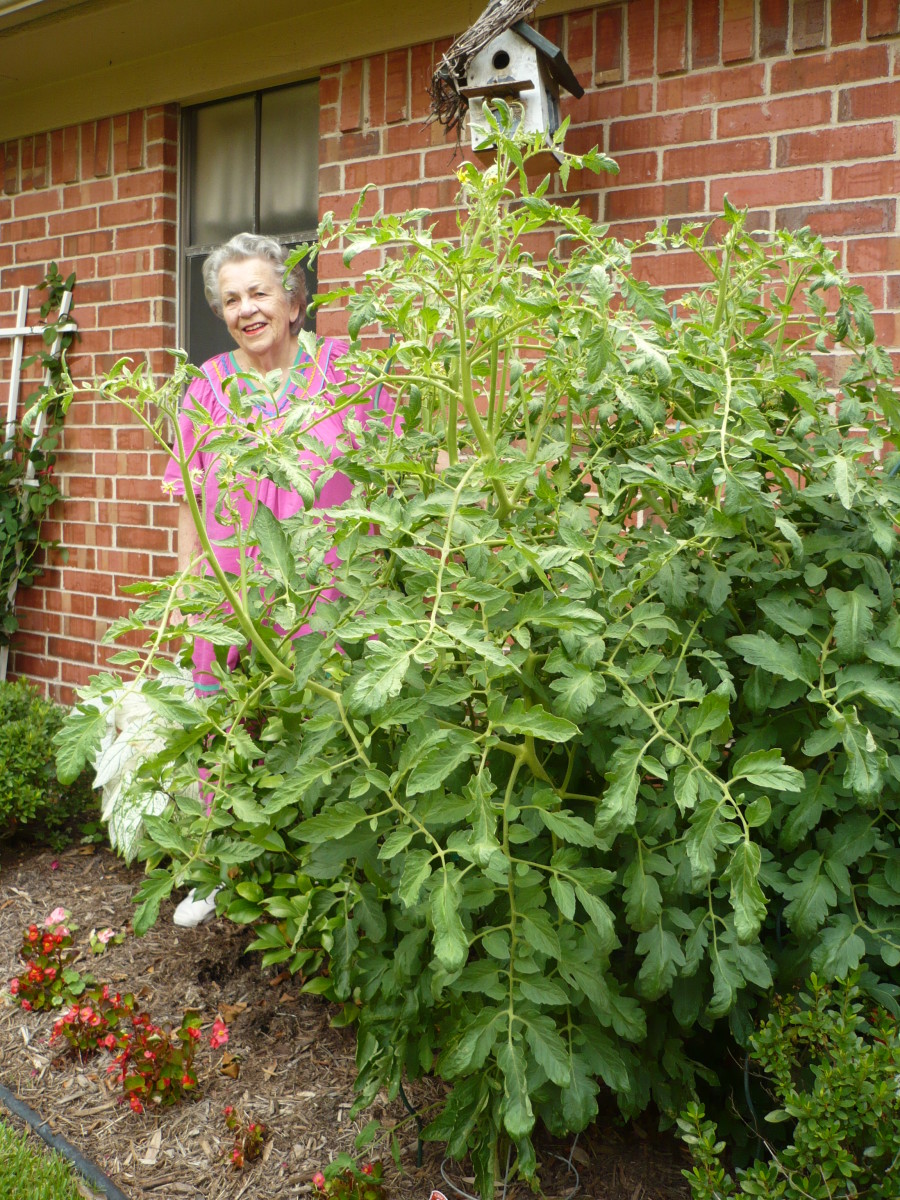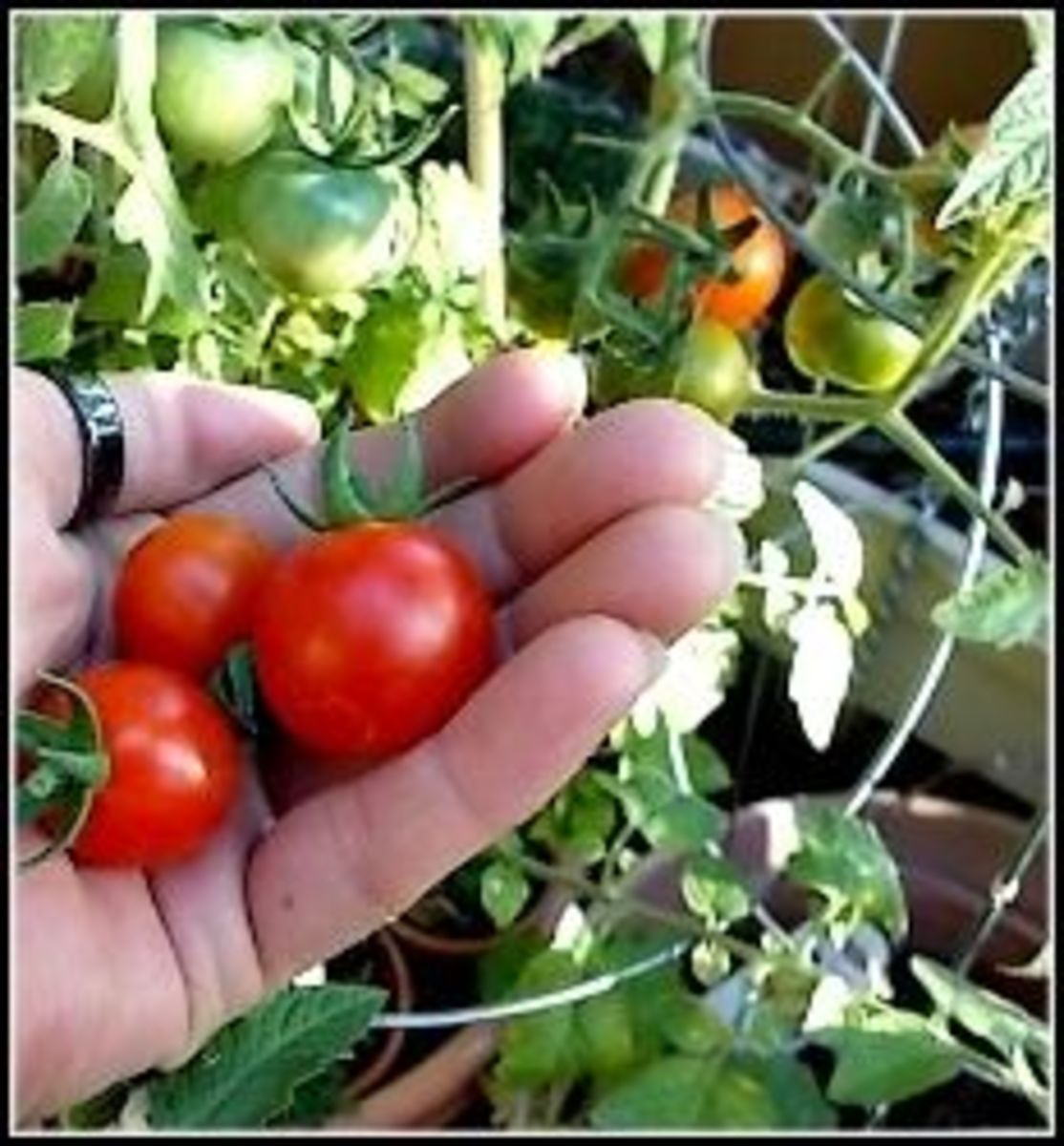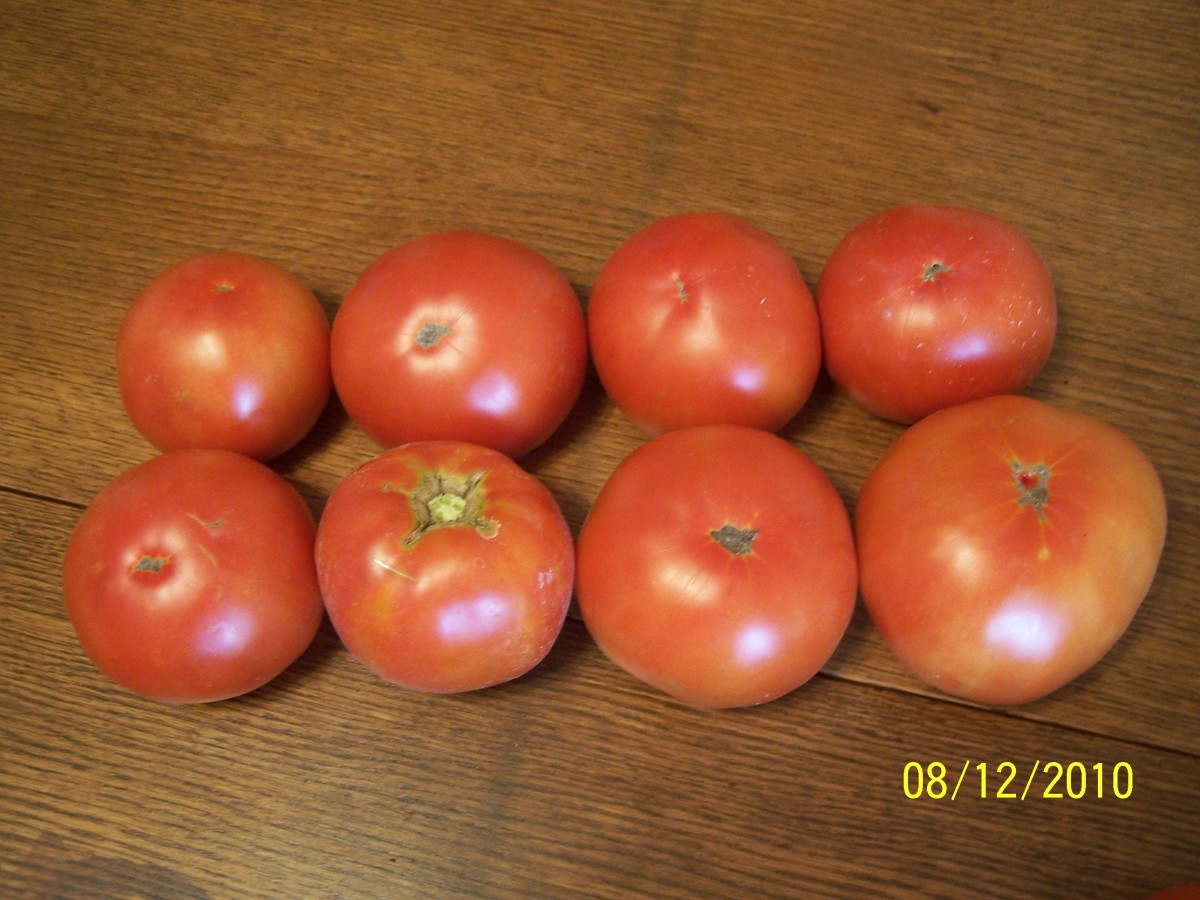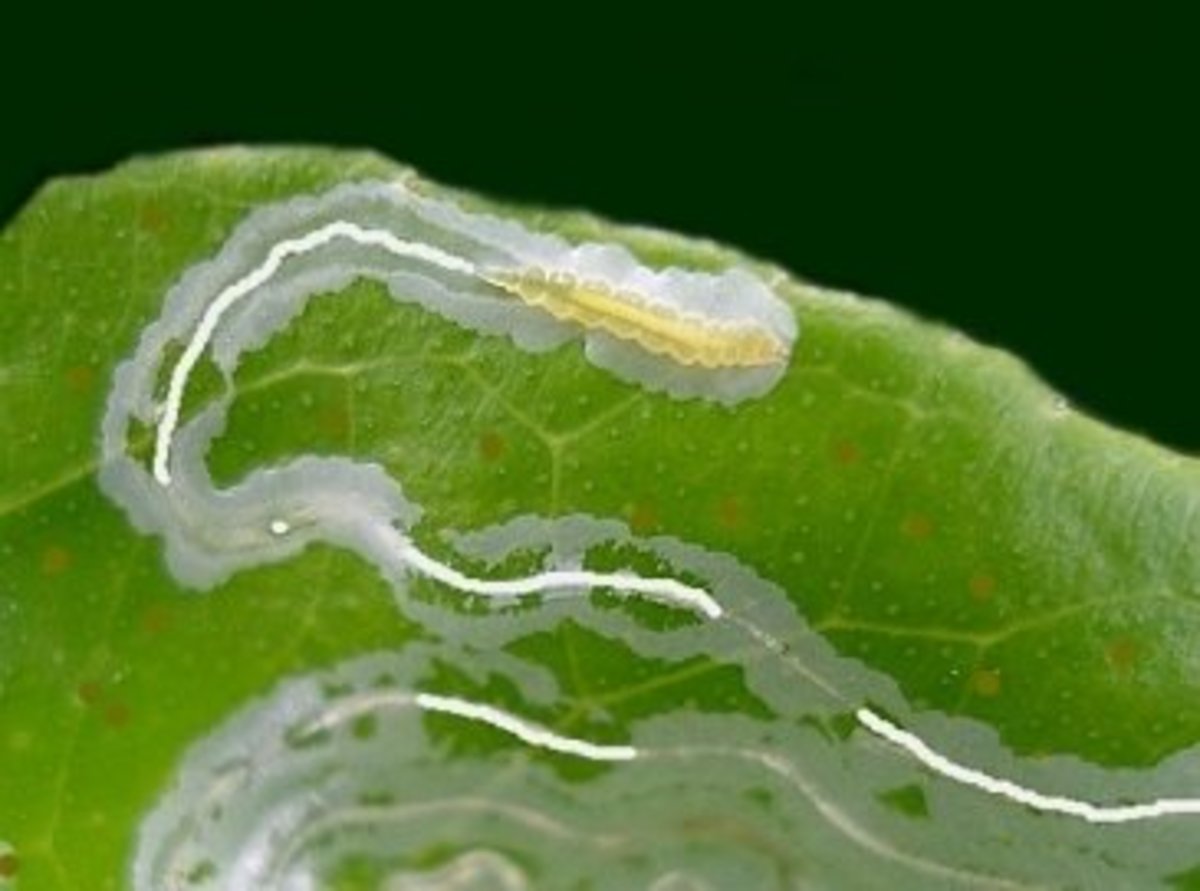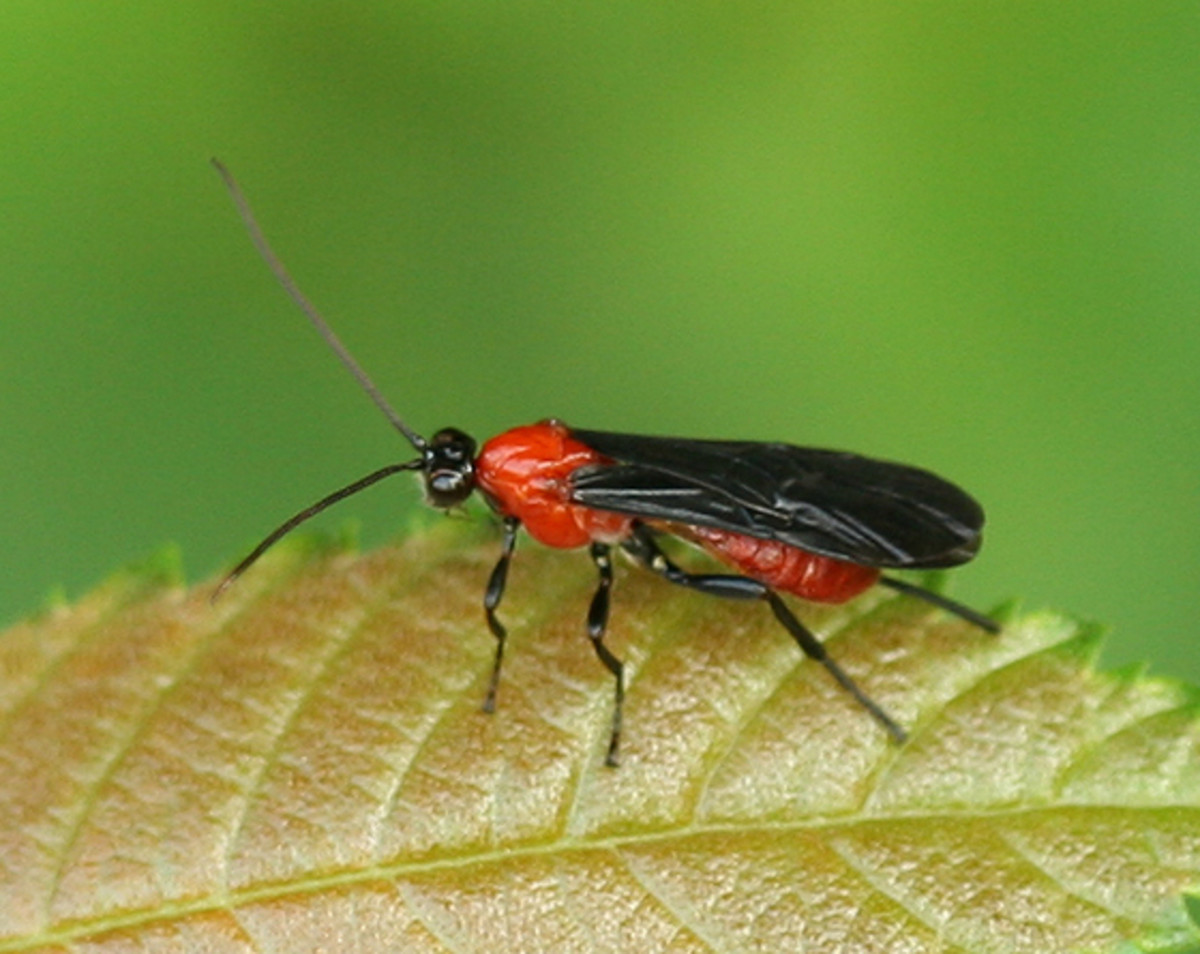Tomato Killer on the Loose - What Ate My Tomatoes?
Tomato Plant Carnage
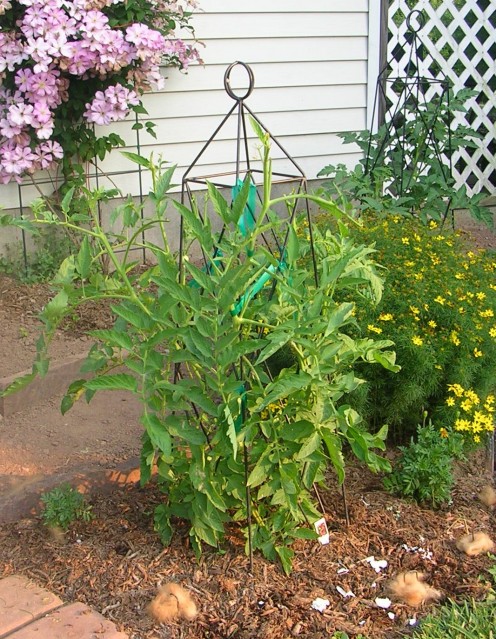
What is Eating My Tomatoes?
There is a tomato killer on the loose in the neighborhood, a marauder on the prowl just as dawn breaks. He’s stealthy, making no noise, casting no shadow. He enters my garden by way of a large common lawn he traverses after leaving the cover of a nearby creek bed that is surrounded by trees and shrubs. Once in the garden, he eats tomato leaves, stems, newly set tomatoes, and lovely, skirted tomato flowers. In his wake he leaves a ravaged tomato plant, a half of a gnawed green tomato lying on the ground a few feet away from the plant, and a smelly string of slimy scat on the lawn. He also leaves unidentifiable impressions in the dry mulch, but none on the bare garden ground that is parched and rock-hard from unseasonably hot, dry weather; what he does leave on the hard, dry ground are drops of liquid speckled with a few immature tomato seeds.
In his pre-dawn raid, the tomato killer devoured the upper third of a four-foot high tomato plant and 16 and one-half green tomatoes out of 19. I know this number exactly, because I’d counted the set tomatoes just the evening before. Oddly, he took no bites from the leaves and stems at the bottom two-thirds of the plant, although he did strip that area of flowers and set tomatoes.
When I first see this devastation in the garden, shortly after dawn, I want to cry out in frustration. Apparently it isn’t enough that I’ve already put my heart, mind, and body into waging war in the garden against bindweed, bugleweed, and Canada thistle. Although I’ve made great progress toward victory on that front, now I have a new invader to contend with.
I think this tomato killer is a mercenary hired by the garden weeds in their attempt to regain the ground they lost in my ongoing war against them.
My fervent hope is that this marauder gets a very bad belly ache from eating tomato stems, leaves, flowers, and green tomatoes.
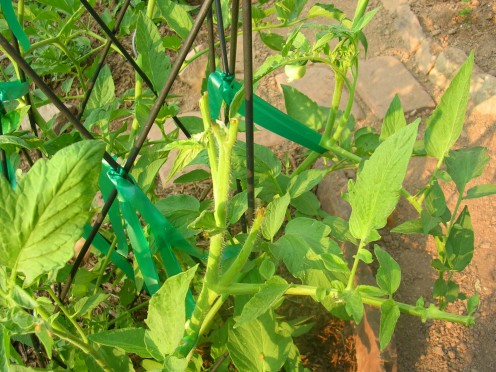
I Begin with the Process of Elimination
I decide to begin solving this mystery with what I know the tomato killer can’t be, based on our local wildlife population and the evidence I’ve gathered so far.
It can’t be a tomato horn worm. Although two or three tomato horn worms can strip an entire tomato plant in a matter of hours, the horn worms are not yet active in our area. Plus, horn worms don’t eat a half of a green tomato and then toss the other half on the ground a few feet from the plant.
It can’t be a groundhog. A groundhog would have left bits and shreds of plant material on the ground (which the marauder did not do) and also would have started eating closer to the ground. In all likelihood, a groundhog would have destroyed the entire plant either by eating it all (they aren’t called “hogs” for nothing) or by eating through each stem, causing the top growth of the stem to topple to the ground.
It can’t be a squirrel. The bird lovers in our neighborhood provide the ideal environment for a squirrel by setting out bird feeders and bird baths. No squirrel in our neighborhood in its right mind would ever be driven to eat a tomato plant!
Slimy Scat
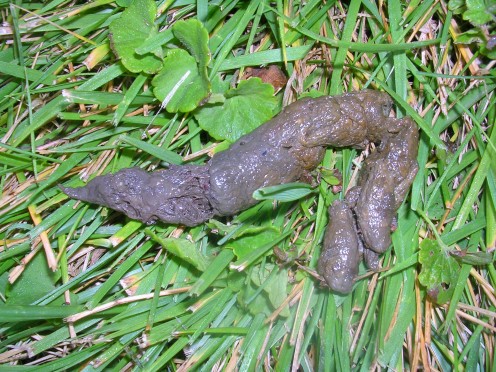
It can’t be a deer. This garden pest is a bit more difficult to eliminate. Indeed, a deer could eat the top third of the plant and could use its slender snout to root out the largest green tomatoes from behind the leaves and stems at the bottom two-thirds of the plant. However, a deer would have left its scat, which looks nothing like the scat the marauder left behind.
It can’t be a rabbit. Rabbits are not tall enough to take off the top third of a four-foot high tomato plant.
It Is Time To Re-examine the Evidence and Make Some Speculations
Now that I am sure what the marauder is not, I need to take a closer look at the clues at hand to figure out what the marauder is.
The scat. I’ve never seen anything quite like it. It has a dark gray color and is pointed at one end. If it were stretched out instead of partially folded onto itself, it would be about four inches long. A bit of research leads me to the conclusion that it is not any kind of dog or cat poo; rather it is the fecal matter of a fox.
Drops of liquid on the ground. Whatever animal wreaked havoc on the tomato plant did it shortly before dawn. If the liquid had been left during the previous evening, or even during the wee hours of the morning, it would have dried before I saw it just after dawn. I do not know if the liquid is tomato juice that escaped when the fruit was bitten, or if the liquid is the tomato killer’s drool. What I can assume is that the culprit is active before dawn, in which case it is probably nocturnal. Although foxes in the wild are not necessarily nocturnal, they tend to develop that behavior in populated areas in order to avoid contact with humans and their machines.
This Tomato Escapes the Carnage
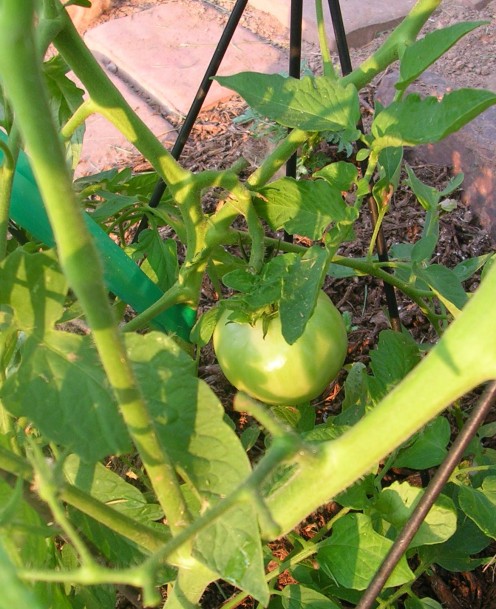
Top growth destroyed while tomatoes close to the ground were removed without damaging the lower leaves and stems. This clue puzzles me. The stems that were destroyed were very long, arching over so that their leaves were rather close to the ground, forming a kind of umbrella over the interior parts of the tomato plant. It could be that the marauder sampled these leaves and stems first, munching higher and higher until a final bite made what was left of the stem snap upright with the dessicated end too high to reach. If that is so, then the animal just moved on to the next low-hanging leaf and repeated the exercise. At some point, the seriously big fruits closer to the ground would have become more exposed, and a sleek snout, which a fox surely has, would have easily found the treasure.
I Bring Memory and Experience to Speculation
As I ponder the evidence, three recent experiences come to mind.
A few weeks ago a neighbor asked if I had heard terrifying sounds in the night, as if an animal were being attacked and killed. Indeed I had, over the course of two or three nights. Neither of us had a clue as to what the source of the sounds might be.
Then, a few days later, another neighbor asked if I knew about the red fox seen making its rounds at dusk and dawn. No, I had not.
Is This the Tomato Killer?

Finally, three days before the attack of the tomato killer, while sitting on my patio just before dawn enjoying a cup of coffee and waiting for the sun to rise, I saw the fox, his nose to the ground, as he left the forested creek bed and headed out onto the common lawn. Suddenly, he froze in his tracks, as I had been frozen in my chair since seeing him, and after just a second or two he turned his head in my direction. He was only 20 feet or less away from me. His eyes locked onto mine. Just as suddenly, he snapped his head back and took off running.
Is the Tomato Killer a Fox?
Conclusions spawned from evidence, anecdote, and experience are not sufficient proof that the marauder is a fox. Proof will come from catching the culprit in the act, designing an experiment to proove my theory that this tomato carnage is the fox’s fault, or the fox will have to confess (which I don’t see happening).
Why would a fox be here?
I’ve been in this townhome community in a now densely populated exurb of Philadelphia, Pennsylvania, USA, for nearly 13 years. I’ve seen deer, groundhogs, and skunks from time to time. These wildlife species make their appearances in my neighborhood for a while, and then they are gone. We neighbors know that wildlife is being displaced from natural habitats, as this still partially rural area continues to be developed with residential and commercial properties. Five years ago it was the groundhogs, three years ago the deer and the skunks. This year, it is the red fox, Vulpes vulpes.
Why would a fox eat tomato plants complete with leaves, stems, fruits, and flowers? It is hot and dry here. I suspect the fox is thirsty. Since I water the tomato plants daily, they are full of water, while the natural stream beds and ponds here are dry. It is sad that a fox has to resort to a tomato plant to quench his thirst.
My Dog's Hair as Fox Repellant
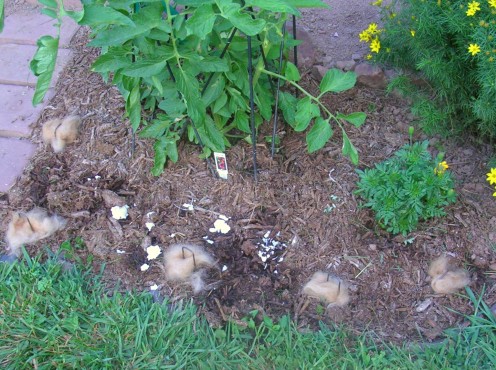
Evidence of a Footprint
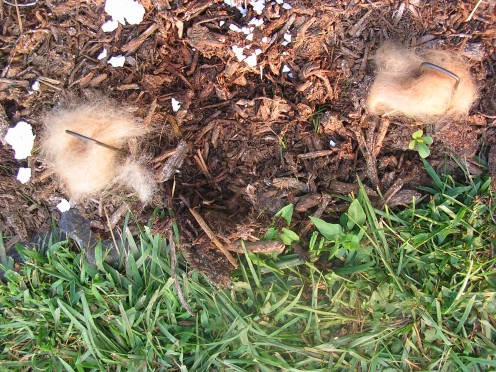
I Move on To Protect My Garden from the Presumed Fox
On the day of the tomato plant devastation in the garden I started a thread in the HubPages forum asking for help in solving the mystery of the nocturnal marauder. Helpful posters contributed their thoughts and experiences.
That night, adding their suggestions and experiences to mine, I reached into a stash of my dog’s saved groomed fur and staked the fur around the devastated tomato plant and its two tomato plant companions that had not yet been traumatized by the presumed fox.
The next morning, I found that the culprit had visited the garden, the evidence being a new pile of fox-specific scat, had taken a step close to the devastated tomato plant, seen by a displacement of the mulch, but had turned away, meaning that there was no further destruction.
My dog Cinnamon, now resting in peace, is protecting the garden at least for now.
The grander issues of protecting displaced wildlife are yet to be resolved. And I have yet to prove that the fox is the tomato killer.

